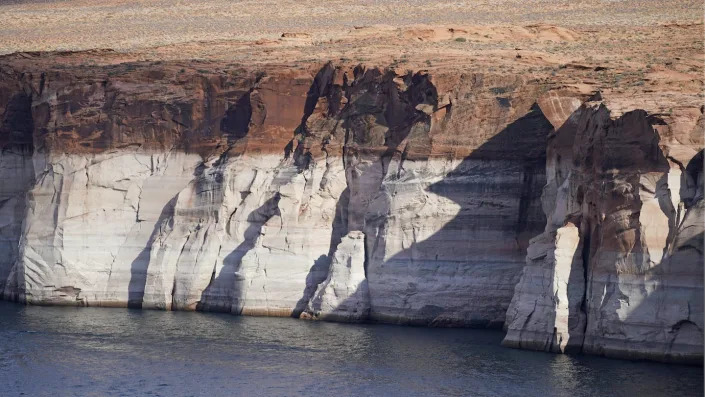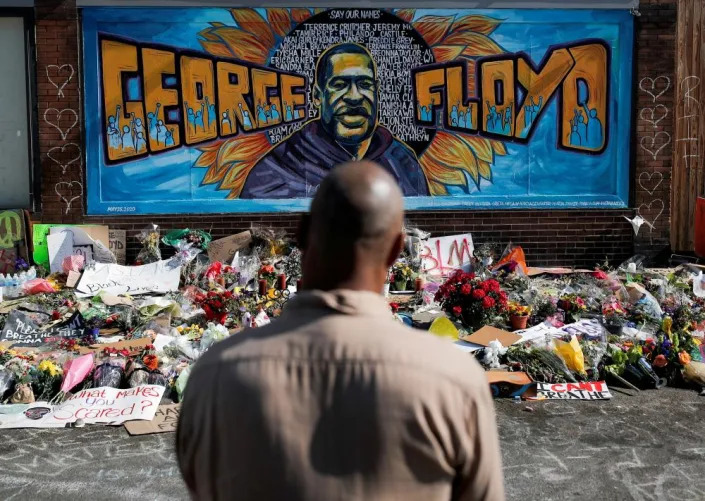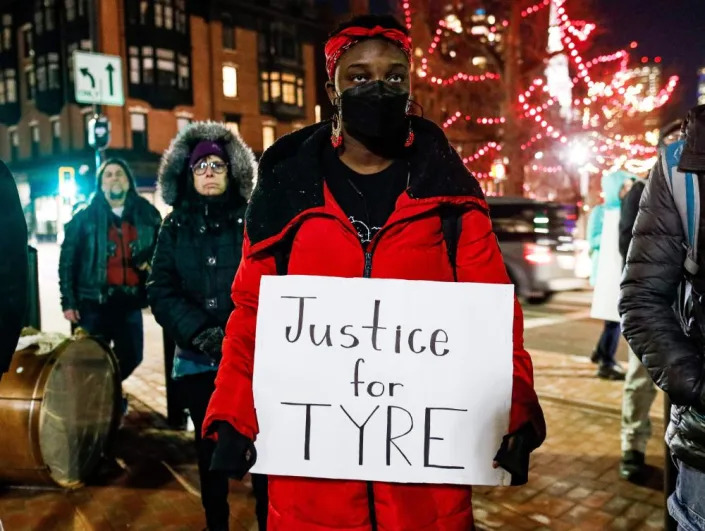Bed Bath & Beyond Has Nothing But Itself to Blame for Impending Bankruptcy
Jeannette Neumann and Eliza Ronalds-Hannon
Mon, February 6, 2023
(Bloomberg) -- Bed Bath & Beyond Inc., facing a crisis in late summer as sales plunged and suppliers revolted, insisted its white-collar workers return to the office four days a week.
Interim Chief Executive Officer Sue Gove told staff at company headquarters in Union, New Jersey, that face time would help quickly address mounting problems facing the retailer, according to six former managers and employees who attended the gathering.
To the employees, however, it felt like just another example of how executives were mired in minutiae as the chain barreled toward bankruptcy. Most staffers had already returned to the office three days a week. One employee spoke up and said an extra day wouldn’t turn around the struggling company. Many in the room nodded or applauded, according to the former managers and employees.
When other well-known stores spiraled into distress in recent years, the internet often took the blame. But the case of Bed Bath & Beyond is more complicated. While the chain was hurt by online rivals like Amazon.com Inc., its undoing is also a story of how deciding to rip it up and start again can leave a company in tatters.
Layoffs, management changes, boardroom shake-ups, stock buybacks and strategic overhauls are go-to maneuvers for modern business, and Bed Bath & Beyond tried them all. At nearly every recent turn, the company took steps that led it deeper into a financial quagmire.
Weeks after the return-to-office edict, Gove said the company would fire about a fifth of its corporate and supply-chain workforce and shut 150 of its nearly 770 Bed Bath & Beyond brand stores in the US. The retailer had secured new financing, Gove said, and was launching a turnaround plan to prepare for the holiday-shopping season.
The reprieve didn’t last. Bed Bath & Beyond has indicated it is preparing for a potential bankruptcy filing. It has missed payments to banks and bondholders, and former employees say they haven’t been paid severance. If the company restructures in bankruptcy by closing more stores, it could emerge as a smaller version of its former self. However, Bed Bath & Beyond’s financial situation is so dire it’s also possible the retailer sells its assets and ceases to operate, Bloomberg News has previously reported.
A Bed Bath & Beyond spokeswoman didn’t respond to requests for comment on this article.
At its peak in 2017, Bed Bath & Beyond had 1,560 stores with 65,000 employees, bringing in $12.3 billion in revenue. But in the nine months through November 2022, it posted sales of just $4.2 billion, and its headcount dwindled to fewer than 30,000.
Blind Spot
Warren Eisenberg and Leonard Feinstein founded Bed Bath & Beyond in 1971. As it grew, the company shunned retail orthodoxy, giving managers wide discretion in stocking shelves, rather than relying on mandates from headquarters. It mostly eschewed warehouses, stacking can openers, coffee pots and bathmats nearly to the ceiling in its stores.
“Everything that we did was for the customer,” Arthur Stark, Bed Bath & Beyond’s longtime president, who left in 2018, said in an interview. “If it meant carrying too much inventory in the store, it was OK. If customers made the commitment to come to our store, we would have it in stock.”
Bed Bath & Beyond also pleased shareholders. Under longtime CEO Steve Temares, it poured billions into repurchasing stock, and acquired Christmas Tree Shops, Cost Plus World Market and Buybuy Baby, founded by Feinstein’s sons.
Still, the company's executives had a blind spot: the web. As Amazon.com and other online shopping sites appeared on the horizon, Bed Bath & Beyond’s executives prioritized their brick-and-mortar business. Eventually, that caught up with them.
Same-store sales, a closely watched retail metric that excludes new or recently closed stores, began to fall in 2017. Stark, who joined Bed Bath & Beyond in 1977, said that in hindsight, the company should have focused more on online retail.
“Surely we could have done better,” he said. “There’s no question.”
According to Stark, the company’s success made it reluctant to change. It had been profitable for years and seemed to go from strength to strength, expanding across the US and Canada.
“We were confronting the challenge of maintaining our stores, maintaining our profitability and investing in technology and digital,” he said in the interview. Stark, 67, now serves on the senior advisory boards for Jefferies Group and Vintage Investment Partners.
Bed Bath & Beyond should have considered going private, Stark said, to invest in e-commerce at the temporary expense of profits. Management had entertained suggestions to take the company private during his tenure, he said.
As executives struggled to invest for the long term amid short-term market pressures, one of the best-known discounts in US retail history was adding to the strain. Bed Bath & Beyond’s 20%-off coupons, sent to tens of millions of households for years, lured shoppers and boosted sales. But they eroded profits, too.
“Like any form of promotion, it becomes a drug,” Stark said. Over the years, attempts to pull back on the mailings or reduce the discount backfired. “Once you’re addicted to it and your customer is addicted to it, it’s a very difficult thing to wean them off of.”
Read more: Bed Bath & Beyond Traced an Erratic Path to Its Current Crisis
Activist Investors
By early 2019, activist investors began agitating for change. Ancora Advisors, Macellum Capital Management and Legion Partners Asset Management wanted Temares to leave. The trio urged asset sales, more investment in private-label brands and online commerce, and more buybacks.
In a 168-page document making their case, the investors noted that the first time Bed Bath & Beyond executives said the word “Amazon” on a conference call was Dec. 21, 2016, a sign they weren’t “embracing industry change.”
Within months, Temares was out.
“We always were well aware of our competitors, respected them, and studied what they did to learn what we could do better,” Temares wrote in a statement in response to questions from Bloomberg.
“I could not have been more proud of the associates I worked with, the quality people they are, and the dedication they exhibited,” he added. “That was then. Ultimately, as we see over and over again, arrogance and ineptitude are deadly.”
The board, with four new members selected as part of an accord with the activists, named former Target executive Mark Tritton CEO in October 2019. As Target’s chief merchandising officer, Tritton had overseen a private-label overhaul credited with helping speed up growth at the discount giant.
Tritton and his team, which included former senior executives from TrueValue, Walgreens and Macy’s, moved fast to tackle the falling profitability and revenue they inherited. They wanted a third of Bed Bath & Beyond products to be private-label, up from 10%, within three years.
Tritton also said he planned to get rid of poorly performing labels and double down on well-known brands such as KitchenAid and Oxo. But that effort faltered as major brands faced pandemic-supply chain problems and the company’s worsening cash crunch left it unable to pay for premium products, according to former managers.
Even before Bed Bath & Beyond’s finances took a nosedive, Tritton and his team showcased their new private-label goods in the redesigned stores and downplayed national brands, according to some of the former managers and employees.
In a presentation to investors a year after taking the reins, Tritton compared his revamp to remodeling a home. “Our house is beloved by so many, but a house reliant on positive memories from the past won’t weather any storm,” he said.
Share Buybacks
In the first five months of 2021, Tritton pushed to introduce six new private-label product lines — ambitious by retail standards. The degree of difficulty was increased by attempting to design, order and oversee manufacturing of thousands of new items as the pandemic snarled output and shipments from China. Once the private-label brands arrived in stores, most were new to shoppers and didn’t resonate with them.
Tritton also promised to use more cash buying back stock. In October 2020, he and his team pledged to repurchase $675 million in shares over three years. By November 2021, the amount had increased and the timeframe had accelerated: They would complete the repurchase of $1 billion shares within about one year. At the time, the retailer had around $600 million of cash on hand.
Some analysts thought that was aggressive. Executives appeared overly optimistic that strong spending by cooped-up consumers in 2020 and 2021 would endure. Dennis Cantalupo, CEO of Pulse Ratings, a credit-rating and consulting firm, said the company could have survived at least another six months if it hadn’t repurchased shares.
“Rather than take that money and put it in the bank and assume that the tailwinds to the industry are going to subside or normalize, they initiated the buyback campaign,” Cantalupo said.
The timing and magnitude of the buybacks stood out “given the simultaneous rapid decline in the company’s topline and cash flow and the need for the company to reinvest in its business quickly,” Fitch Ratings analysts David Silverman and Monica Aggarwal wrote in an email.
Tritton’s private-label push ended up outstripping the aims of some of the activist shareholders, according to people familiar with their thinking.
Some former Bed Bath & Beyond executives, though, say the pandemic and supply-chain problems made it nearly impossible for Tritton to transform the ailing company.
In March 2022, Tritton and his team welcomed employees back to the company’s renovated headquarters for the first time since the start of the pandemic. The theme was “Together, Happier,” a nod to a marketing campaign launched in 2021, called “Home, Happier.”
As part of the return, employees took part in activities including a scavenger hunt. One of the clues led to a new mural of Bed Bath & Beyond’s history entitled “Our Big Moments (So Far),” according to a photo viewed by Bloomberg News. The chronology included its founding, its 1992 public listing and its 2007 purchase of Buybuy Baby.
While the timeline mentioned Tritton’s appointment in 2019, it didn’t include the names of the founders or his predecessor. That felt fitting to several of the former managers and employees, who said it reflected a disregard for the company’s history and what had made it unique.
The retailer atrophied as the year went on. Tritton was ousted in June. Sales in the three months ended Aug. 27 fell 28% from the previous year. Inventories became increasingly sparse as many suppliers, worried about getting paid, halted or restricted shipments.
That’s meant many shoppers have left stores empty-handed, including the former Bed Bath & Beyond president, Stark.
About a year ago, he said, he went to a store in East Hanover, New Jersey, to shop for wedding registry gifts with his son and the son’s fiancée. The couple wanted Wamsutta bed sheets, once a staple at the retailer. They had no luck.
“They said, ‘Let’s go to Bloomingdale’s,’” Stark said.
Bloomberg Businessweek












